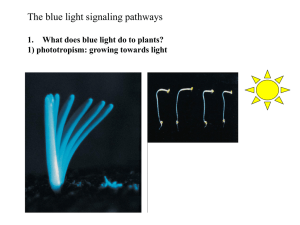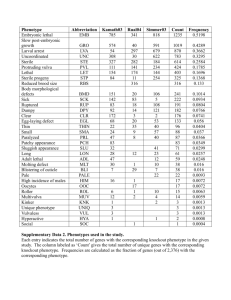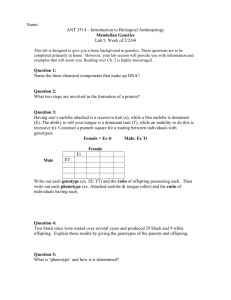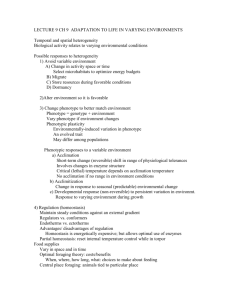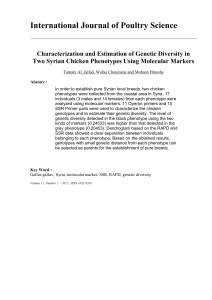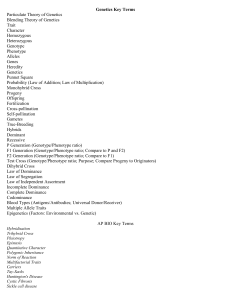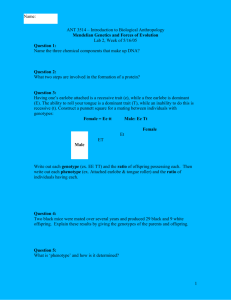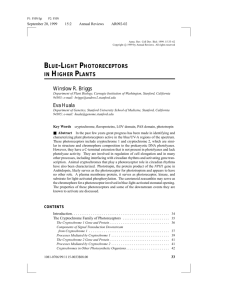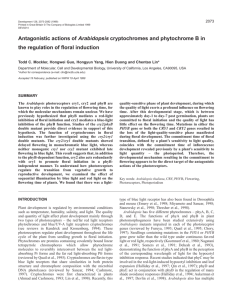Title: Functional Studies of Arabidopsis FIN219 in Cross
advertisement
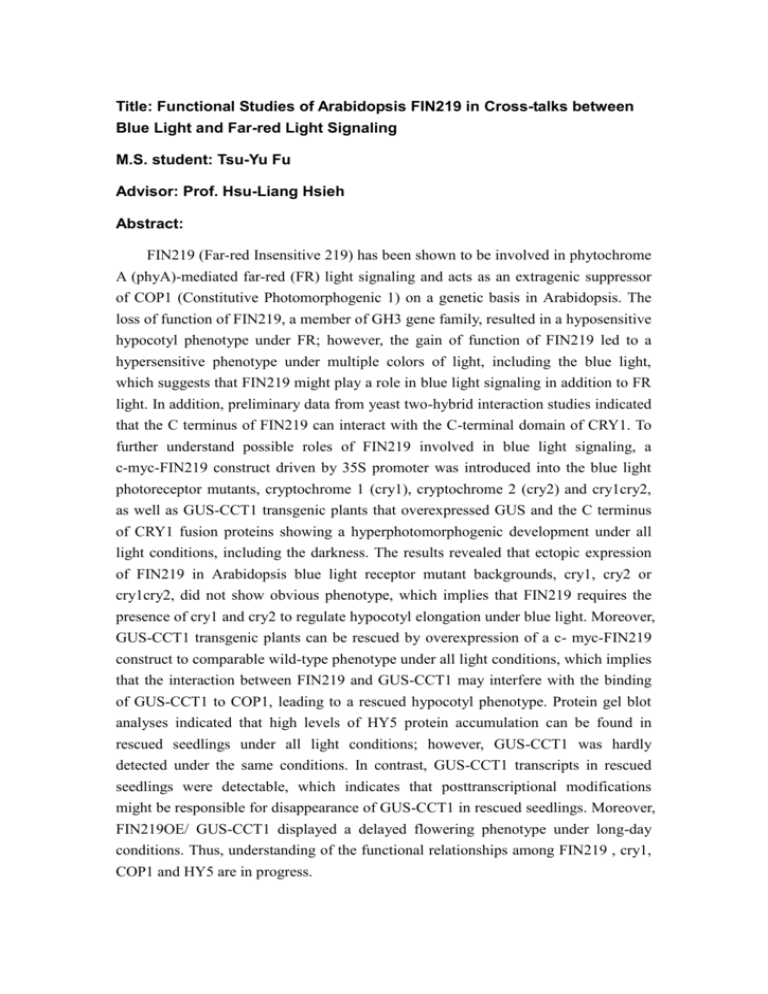
Title: Functional Studies of Arabidopsis FIN219 in Cross-talks between Blue Light and Far-red Light Signaling M.S. student: Tsu-Yu Fu Advisor: Prof. Hsu-Liang Hsieh Abstract: FIN219 (Far-red Insensitive 219) has been shown to be involved in phytochrome A (phyA)-mediated far-red (FR) light signaling and acts as an extragenic suppressor of COP1 (Constitutive Photomorphogenic 1) on a genetic basis in Arabidopsis. The loss of function of FIN219, a member of GH3 gene family, resulted in a hyposensitive hypocotyl phenotype under FR; however, the gain of function of FIN219 led to a hypersensitive phenotype under multiple colors of light, including the blue light, which suggests that FIN219 might play a role in blue light signaling in addition to FR light. In addition, preliminary data from yeast two-hybrid interaction studies indicated that the C terminus of FIN219 can interact with the C-terminal domain of CRY1. To further understand possible roles of FIN219 involved in blue light signaling, a c-myc-FIN219 construct driven by 35S promoter was introduced into the blue light photoreceptor mutants, cryptochrome 1 (cry1), cryptochrome 2 (cry2) and cry1cry2, as well as GUS-CCT1 transgenic plants that overexpressed GUS and the C terminus of CRY1 fusion proteins showing a hyperphotomorphogenic development under all light conditions, including the darkness. The results revealed that ectopic expression of FIN219 in Arabidopsis blue light receptor mutant backgrounds, cry1, cry2 or cry1cry2, did not show obvious phenotype, which implies that FIN219 requires the presence of cry1 and cry2 to regulate hypocotyl elongation under blue light. Moreover, GUS-CCT1 transgenic plants can be rescued by overexpression of a c- myc-FIN219 construct to comparable wild-type phenotype under all light conditions, which implies that the interaction between FIN219 and GUS-CCT1 may interfere with the binding of GUS-CCT1 to COP1, leading to a rescued hypocotyl phenotype. Protein gel blot analyses indicated that high levels of HY5 protein accumulation can be found in rescued seedlings under all light conditions; however, GUS-CCT1 was hardly detected under the same conditions. In contrast, GUS-CCT1 transcripts in rescued seedlings were detectable, which indicates that posttranscriptional modifications might be responsible for disappearance of GUS-CCT1 in rescued seedlings. Moreover, FIN219OE/ GUS-CCT1 displayed a delayed flowering phenotype under long-day conditions. Thus, understanding of the functional relationships among FIN219 , cry1, COP1 and HY5 are in progress.
